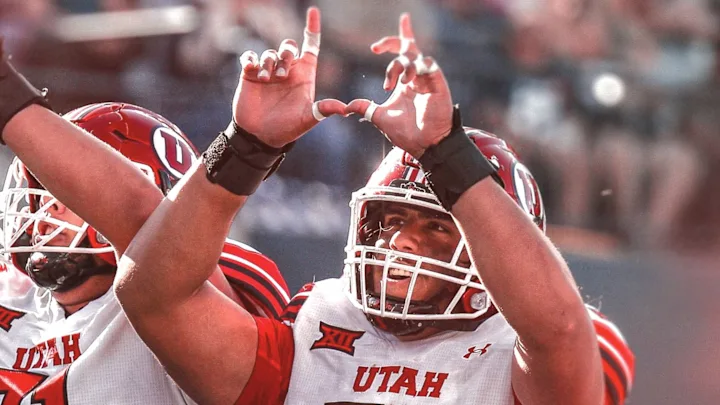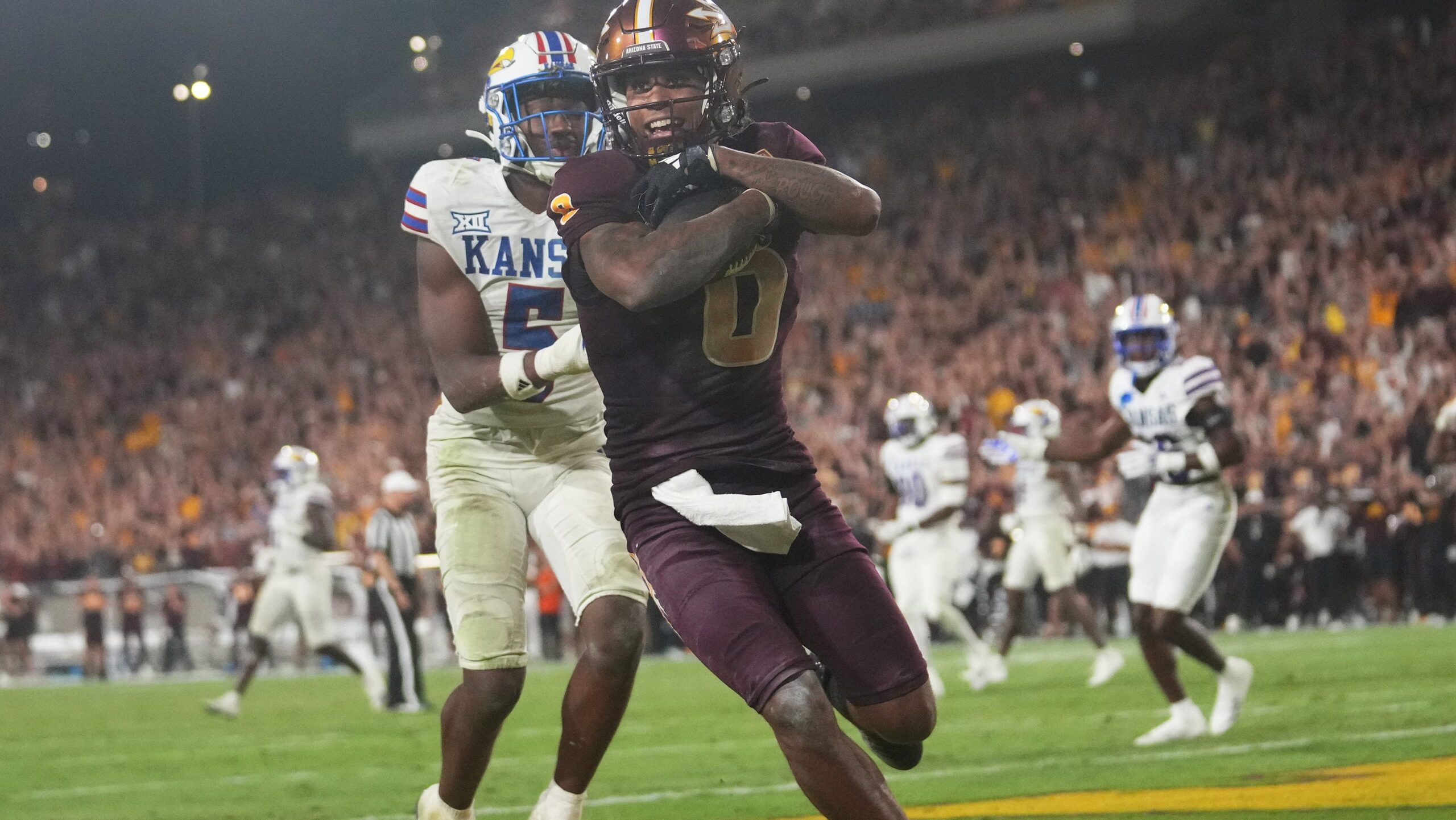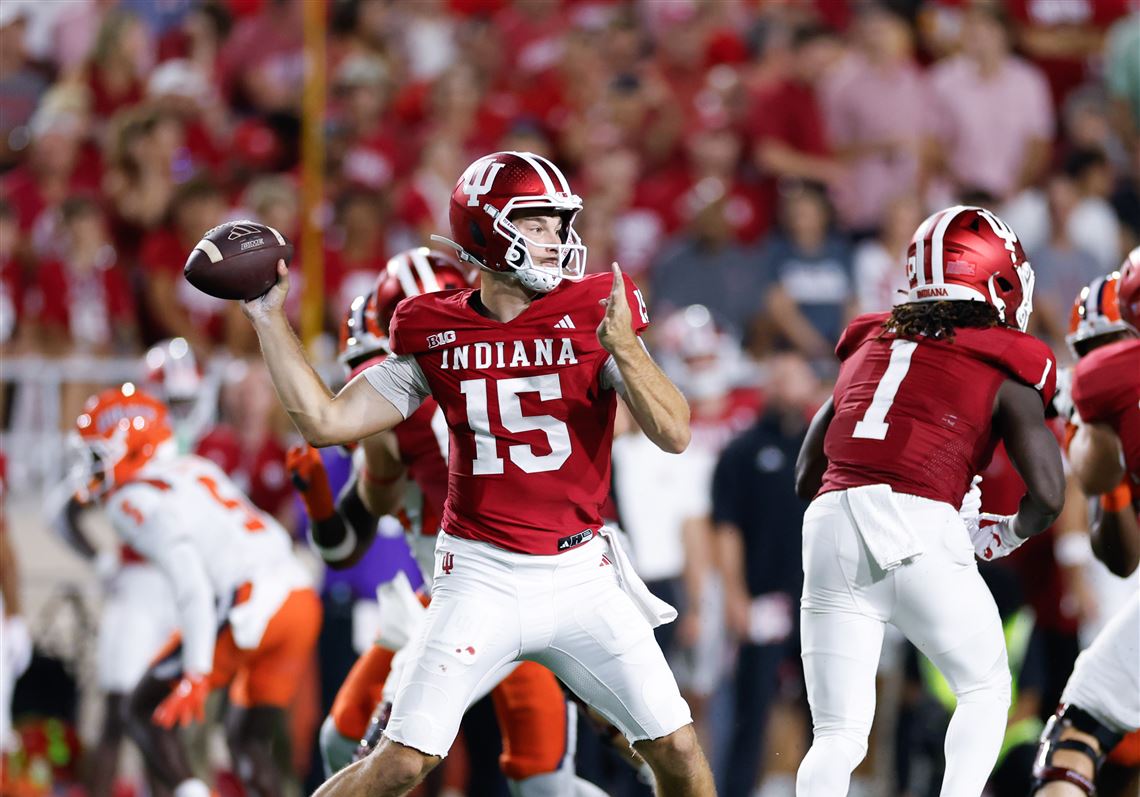By Charlie Campbell.
Send Charlie an e-mail here: [email protected]
Follow Charlie on Twitter @draftcampbell for updates.
This page was last updated March 22, 2019. Follow me @walterfootball for updates.
Tight End Class
Early-round talent: A-
Mid-round: A-
Late-round: B+
Overall grade: A-
2019 prospects vs 2018
T.J. Hockenson
Hayden Hurst
Noah Fant
Irv Smith Jr.
Mike Gesicki
Dallas Goedert
Caleb Wilson
Mark Andrews
Jordan Akins
Ian Thomas
Zach Gentry
Foster Moreau
Drew Sample
Tommy Sweeney
Chris Herndon
Will Dissly
The 2017 draft class was a great class of tight ends that received a rare A+ from me. Last year wasn’t as good, but this year’s class is a strong group of tight ends. There are some good early-round talents, and team sources have told me they like the depth of tight ends for the mid-rounds and Day 3 of the 2019 NFL Draft.
If you were to merge the two classes, T.J. Hockenson would edge out Hurst. As a player, I like Hayden Hurst a little more, but he was an older prospect who had played pro baseball, so that took away a few years from his NFL career. Thus, I have Hockenson rated first. Despite the age factor, Hurst is still a better prospect than Noah Fant or Irv Smith Jr. However, I think both Fant and Smith are better than Mike Gesicki and Dallas Goedert, who were second-round picks last year. I like Caleb Wilson more than 2018 third-rounders Mark Andrews and Jordan Akins. Ian Thomas was a steal in early in Round 4 in 2018, and I think he is better than the group that could go early on Day 3 this year. There are also some other good mid-round tight ends this year, including San Diego State’s Kahale Warring, Utah State’s Dax Raymond, Texas A&M’s Jace Sternberger and San Jose State’s Josh Oliver.
Safest Pick: T.J. Hockenson, Iowa

Previous Picks:
2018: Hayden Hurst
2017: O.J. Howard
2016: Hunter Henry
2015: Clive Walford
2014: Eric Ebron
2013: Zach Ertz
My track record here is pretty good. Hurst had a solid rookie year, but obviously it is still too early to pass any judgements. Henry has been solid through two seasons. Walford is the one blemish because he didn’t stick in Oakland. Ebron was a disappointment as a top-10 pick for Detroit, but that fault appears to be with the Lions because Ebron was one of the best tight ends in the NFL last year for the Colts. Ertz is one of the best tight ends in the NFL.
Not many college tight ends coming into the NFL are balanced players, but Hockenson is the exception. He is a mismatch receiver who combines quickness, athleticism, hands and size to give defenses a lot of problems. As a blocker, Hockenson is superb and like an extra offensive lineman on the field. For the 2019 NFL Draft, Hockenson is the top tight end and the safest of the prospects to develop into a quality starter.
Biggest Bust Potential: Noah Fant, Iowa

Previous Picks:
2018: Jordan Akins
2017: Adam Shaheen
2016: Nick Vannett
2015: Nick O’Leary
2014: Jace Amaro
2013: Gavin Escobar
My track record here is pretty good. Akins disappointed as a rookie, but he has time to reverse that. Shaheen could be an exception as he flashed as a rookie before being injured last year. Vannett hasn’t impressed through three years. O’Leary was a sixth-round pick, so you can’t say he is a true bust even though he didn’t stick with the Bills. Amaro was a bust for the Jets, and Escobar was a bust as a second-round pick for Dallas, never coming close to his draft slot.
This was a tough choice because there isn’t one early-round tight end prospect who I see with a lot of bust potential. Since I have to pick one, I would go with Fant. There are a few reasons for that. One, Fant has some makeup issues, and those character concerns could push him down in the draft. The other issues that I could see being problems for Fant are his lack of blocking ability and his lack of natural hands. Thus of the early-rounders, I think Fant carries the most risk.
Tight End Rankings by Attributes
Pass Receiving:
NFL prototype: Rob Gronkowski, Patriots
- Noah Fant
- Irv Smith Jr.
- Caleb Wilson
- T.J. Hockenson
- Zach Gentry
- Foster Moreau
- Drew Sample
- Tommy Sweeney
Recap: The NFL has evolved to the point where tight ends are a critical part of a potent passing attack. Some teams have better receiving weapons at tight end than they do at wide receiver. The league is driven by passing, so if a tight end can’t contribute as a receiver, he could have a hard time seeing the field. The 2019 NFL Draft has some tight ends who can do damage in the receiving game.
Fant is the top receiving tight end for the 2019 NFL Draft. The best trait about Fant is his speed. He is a very fast tight end who can cause problems for defenses with his ability to run away from coverage and tacklers. Fant is able to bolt down the seam and has an ability to generate separation from coverage, plus his size allows him to make receptions over defensive backs. Fant is a quality route runner and tracks the ball well downfield. He is adept at finding the soft spot in zone coverage and presenting a good target for his quarterback. With his speed and ability to get open, Fant should produce some good receiving numbers during his NFL career even though he is not a natural handscatcher of the football.
Smith has the potential to be a mismatch receiving tight end who produces some big plays for his offense in the passing game. He is a good route runner with quickness, athleticism and feel. Smith is too smooth of a route-runner for linebackers to run with him, and he has enough size to make catches over defensive backs. Smith tracks the ball well downfield and shows late hands to make the catch even when defenders are close. Due to his quickness and athleticism, Smith is dangerous with the ball in his hands to rip off more yardage after the catch. Team sources have said that Smith has only one play speed and they wish he had a second gear.
Wilson is an excellent receiving target for the NFL. He totaled 60 catches for 965 yards and four touchdowns in 2018. Prior to that, he was in store for a massive 2017 season with Josh Rosen before an injury cut short his year. Wilson is a like a taller Jordan Reed, as he is a shifty route-runner with good hands and run-after-the-catch skills. Wilson could be a receiving mismatch and good contributor to the passing game.
Hockenson has mismatch potential for the passing game. With his quickness and athleticism, he will be tough for linebackers to cover, and his size is problematic for safeties. Hockenson does a nice job of using his frame to shield defenders from the ball and win on contested catches. He has reliable hands and is dangerous after the catch. Hockenson runs through tackles and gets yards after contact downfield. He is dangerous at working the middle seam with quickness to get to the second level. With good route-running and feel, Hockenson can consistently get open. He tracks the ball well, adjusts to passes well, and is a real asset in the red-zone.
Gentry, Moreau, Sample and Sweeney do not offer a lot as receivers for the NFL. They are more blocking tight ends and backups to rotate into the game. Those four are incapable of contributing as receivers, but that is not the strength of their games.
Blocking:
NFL prototype: Marcedes Lewis, Jaguars
- T.J. Hockenson
- Zach Gentry
- Foster Moreau
- Drew Sample
- Tommy Sweeney
- Irv Smith Jr.
- Caleb Wilson
- Noah Fant
Recap: Blocking ability is still important for NFL tight ends; not just in the ground game, but in pass protection. Teams like their tight ends to have the ability to help offensive tackles when they’re going against an elite edge-rusher.
As a blocker, Hockenson is special. He is like an extra offensive lineman in the game with his ability to tie up and handle defenders. Hockenson has size and strength, plus the ability to win his blocks at the NFL level as well. He gives a relentless effort and has excellent technique. His blocking should improve with pro coaching, but he enters the NFL as a plus blocker and significantly better than most receiving tight end prospects for the NFL.
Gentry (6-8, 262) is a big tight end who can control and push around defenders at the point of attack. He should be a nice Y tight end in the NFL and a reliable blocker.
Moreau was a quality blocking contributor for LSU, and he showed that again at the Senior Bowl. He has good technique to get into the chest of defenders and tie them up. Moreau should be a nice blocker to lean on in the NFL.
Sample and Sweeney are solid blockers. They have developed strength and good technique. Both give a good effort and are consistent with contributing to the ground game.
The bottom three are all weaker as blockers. Smith is undersized for blocking and needs to get stronger to be more effective against NFL defenders. His motor in the blocking game is not always steady, and he could stand to improve the effort or fight he exudes when he blocks. As a pro, Smith is never going to be a great blocker, because his size limitations are going to limit what he can do against defensive ends and linebackers.
Wilson is similar in that he does not have the size to really be a difference-maker as a blocker in the NFL. As a blocker, Fant needs work for the NFL. His technique and strength could use improvement for battling pro defenders. He probably will never be a force in the ground game, but he could get better by giving more of an effort and blocking with more attitude.
Red Zone:
NFL prototype: Antonio Gates, Chargers
- T.J. Hockenson
- Noah Fant
- Irv Smith Jr.
- Caleb Wilson
- Drew Sample
- Tommy Sweeney
- Foster Moreau
- Zach Gentry
Recap: Tight ends are critical players in the red zone. Multiple tight ends are needed for goal-line packages. Many teams also like to use double-tight end sets inside the 20-yard line. A tight end who is a big target with sure hands and leaping ability is a good weapon to help produce touchdowns instead of field goals.
Hockenson has the most red-zone potential of this group as he will be a valuable weapon to help produce points for his offense. There is no doubt that his NFL team is going to have Hockenson as a main stay in the red zone due to his blocking and receiving ability. He can be a mismatch receiver to catch scores while also helping the ground game to get the ball across the goal line.
Fant, Smith and Wilson will be good red-zone weapons in the passing game. They will be valuable to use in the 5-20-yard range especially. At the goal-line, they probably will get subbed out a fair amount for tight ends who have more blocking skills.
Sweeney and Sample could catch some scores during their careers, and they will be more of red-zone role players for blocking near the end zone. Ditto for Moreau, who could be a red zone contributor because of his blocking ability. He could catch a few touchdowns but won’t be a red-zone mismatch weapon. Gentry has the size to be part of the goal-line sets, but outside of the five-yard line, he may not have the athleticism and receiving ability to be a serious red-zone threat. His height helps him, but he still only had three touchdowns over the past two seasons. Obviously, Jim Harbaugh did not use him as a point producer.
Hands:
NFL prototype: Jason Witten, Cowboys
- T.J. Hockenson
- Caleb Wilson
- Irv Smith Jr.
- Drew Sample
- Tommy Sweeney
- Foster Moreau
- Zach Gentry
- Noah Fant
Recap: Tight ends with bad hands don’t get thrown the ball often in the NFL. They have a hard time seeing the field and end up only playing in goal-line situations and on special teams. In the group above, there isn’t a player who I would say has bad hands.
Hockenson and Wilson have the best hands of this group. I think Hockenson is the most sure-handed overall. Wilson has really soft hands and is a natural hands catcher. Sample, Sweeney, Moreau, and Gentry were generally reliable for bigger blocking tight ends. Once in awhile, you would see a drop from some of them. Fant had too many drops for Iowa and needs to improve the consistency of his hands for the NFL. He is not a natural hands catcher, and that could be seen at the combine when he dropped passes in his field workout.
H-Back:
NFL prototype: Charles Clay, Bills
- Irv Smith Jr.
- Caleb Wilson
- T.J. Hockenson
- Noah Fant
- Foster Moreau
- Drew Sample
- Tommy Sweeney
- Zach Gentry
Recap: Many offensive coordinators like tight ends with the flexibility to line up as an h-back. That allows them to set up more mismatches and align blocking schemes differently. Not all tight ends have the athletic ability and quickness to pull off h-back responsibilities. Aaron Hernandez was superb at it for New England and was the prototype a few years ago. Charles Clay is the best now.
Smith projects as the best h-back tight end of this group, and he played some h-back at Alabama. He has the h-back build to go with with his quickness and athleticism. Wilson is similar and could play h-back. He is a quick, agile athlete who could work at h-back and provide mismatches in that role. Hockenson would be a big h-back, but he has the quickness and athletic ability to execute. That also could be seen in his rushing touchdown last year. Fant has speed and athletic ability such that he could be a taller h-back.
Moreau, Sample, Sweeney and Gentry don’t look like fits for h-back.
Yards After Catch:
NFL prototype: Ron Gronkowski, Patriots
- Noah Fant
- T.J. Hockenson
- Irv Smith Jr.
- Caleb Wilson
- Tommy Sweeney
- Drew Sample
- Foster Moreau
- Zach Gentry
Recap: There are some tight ends in the NFL who are very dangerous with the ball in their hands. Having the ability to pick up yards after the catch – YAC – is not an easy trait to find in tight ends. This class has some amazing YAC tight ends.
Fant is a scoring threat after the catch because of his rare speed. He can fly for a tight end and rips off yards in chunks. In the open field, Fant has a second gear to run away from defenders and produce long gains while being a threat to take the ball the distance. In the NFL, he could be a tremendous YAC tight end.
Hockenson is dangerous after the catch. He runs through tackles and gets yards after contact downfield. He also has a burst with surprising speed to run away from tacklers and bolt toward the end zone. In the open field, Hockenson can hurdle defensive backs, but in the NFL, he may want to be careful about doing that as it puts his body in a vulnerable state. As a pro, Hockenson has the potential to be a good YAC receiving tight end.
With his quickness and athleticism, Smith is dangerous with the ball in his hands to rip off more YAC. He had some long gains for Alabama last year. Smith is more of a one-speed player, so that puts him behind the Iowa tight ends.
Wilson is a good athlete with quickness to add YAC. He has one speed and does not power through tackles like some other receiving tight ends. Wilson is not a tackle breaker, rather using his feet to get more yardage prior to getting tackled.
Sweeney, Sample, Moreau and Gentry won’t be big YAC receivers in the NFL. They don’t have the speed or athleticism to be dangerous threats with the ball in their hands.
NFL Picks - Jan. 17
2026 NFL Mock Draft - Jan. 14
NFL Power Rankings - Jan. 5
Fantasy Football Rankings - Sept. 1




